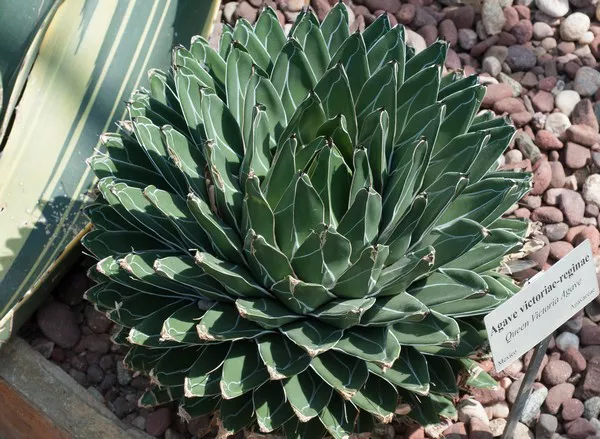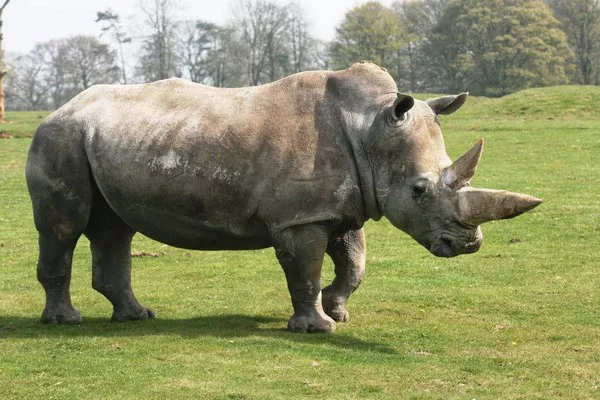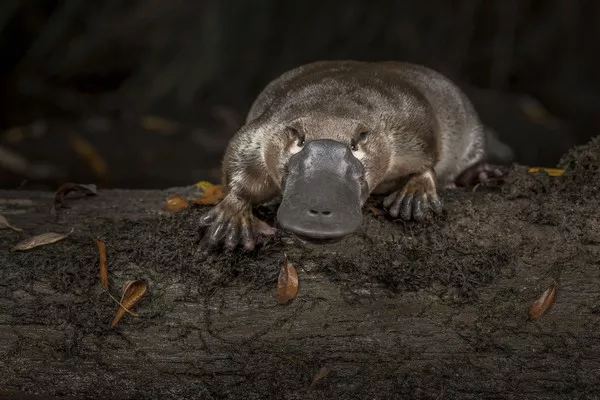Agaves are a diverse genus of succulent plants known for their striking beauty, architectural elegance, and resilience in arid environments. With over 200 species distributed across North and South America, agaves have captivated plant enthusiasts and botanists alike for centuries. In this article, we’ll delve into the world of agaves and explore some of the most stunning species that showcase the remarkable diversity of this botanical genus.
5 Most Beautiful Agave
1. Agave victoriae-reginae: The Queen Victoria Agave
Description: Agave victoriae-reginae, also known as the Queen Victoria agave or the royal agave, is renowned for its compact rosette of tightly arranged, triangular leaves. Each leaf is adorned with distinctive white markings that resemble intricate lace patterns, creating a stunning contrast against the plant’s dark green foliage. This agave typically reaches a diameter of 1 to 2 feet and produces a tall flower spike adorned with small, white flowers.
Habitat: Native to the Chihuahuan Desert of Mexico, Agave victoriae-reginae thrives in rocky, well-drained soils and can withstand extreme temperatures and drought conditions.
Cultural Significance: The Queen Victoria agave is highly prized by succulent collectors and landscapers for its unique appearance and low-maintenance requirements. It is often used as a focal point in drought-tolerant gardens and xeriscaping projects.
2. Agave parryi: The Parry’s Agave
Description: Agave parryi is a visually striking species characterized by its dense rosette of blue-gray leaves adorned with prominent, toothed margins. The leaves form a symmetrical spiral pattern, creating a sculptural effect reminiscent of a giant artichoke. As the plant matures, it produces a towering flower spike that can reach heights of up to 15 feet, adorned with clusters of yellow flowers.
Habitat: Native to the rocky slopes and canyons of the southwestern United States and northern Mexico, Agave parryi is well-adapted to arid, high-altitude environments.
Cultural Significance: Parry’s agave is prized for its ornamental value and drought tolerance, making it a popular choice for landscaping in arid regions. It is also used in traditional medicine by indigenous communities for its purported healing properties.
3. Agave attenuata: The Foxtail Agave
Description: Agave attenuata, commonly known as the foxtail agave or lion’s tail agave, is prized for its distinctive appearance and lack of sharp spines. Unlike most agaves, which have sharp, dagger-like leaves, Agave attenuata has soft, flexible leaves arranged in a rosette formation that gives it a graceful, flowing appearance. The plant typically reaches heights of 3 to 4 feet and produces a tall, arching flower spike adorned with yellow-green flowers.
Habitat: Native to the coastal mountains of central Mexico, Agave attenuata thrives in semi-shaded, well-drained soils and is often found growing in subtropical forests and scrublands.
Cultural Significance: The foxtail agave is prized for its ornamental value and versatility in landscaping. Its soft foliage and lack of spines make it a popular choice for gardens, parks, and urban landscapes where safety is a concern.
4. Agave americana: The Century Plant
Description: Agave americana, commonly known as the century plant, is one of the largest and most iconic species in the genus. It forms a massive rosette of rigid, sword-shaped leaves that can reach lengths of 6 to 8 feet and widths of up to 10 feet. The leaves are typically gray-green in color with serrated edges and sharp spines along the margins. Despite its common name, the century plant typically blooms after 10 to 30 years, producing a towering flower spike that can reach heights of 20 feet or more.
Habitat: Native to arid regions of Mexico and the southwestern United States, Agave americana thrives in sunny, well-drained soils and can tolerate drought, heat, and poor soil conditions.
Cultural Significance: The century plant is valued for its dramatic silhouette and architectural presence in the landscape. It is often used as a focal point in desert gardens, rockeries, and succulent collections.
5. Agave titanota: The Titanota Agave
Description: Agave titanota is a visually striking species characterized by its compact rosette of stiff, lance-shaped leaves adorned with prominent teeth along the margins. The leaves are typically bluish-green in color with intricate white markings that resemble frost patterns. Unlike some agave species, Agave titanota remains relatively small, typically reaching heights of 2 to 3 feet.
Habitat: Native to the mountains of central Mexico, Agave titanota thrives in rocky, well-drained soils at high elevations.
Cultural Significance: The titanota agave is prized for its ornamental value and unique appearance, making it a sought-after plant for succulent enthusiasts and collectors. It is often grown in containers or rock gardens where its compact size and striking foliage can be appreciated up close.
See Also: The World’s Most Expensive Bonsai
Conclusion
Agaves are truly remarkable plants that showcase the beauty and diversity of the natural world. From the intricate lace patterns of Agave victoriae-reginae to the towering flower spikes of Agave americana, each species has its own unique characteristics and charm. Whether used as ornamental plants in gardens and landscapes or admired for their resilience in harsh environments, agaves continue to captivate and inspire plant lovers around the globe.
You Might Be Interested In:
























